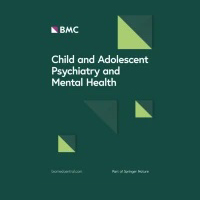Scoping review on mental health standards for Black youth: identifying gaps and promoting equity in community, primary care, and educational settings
Abstract
Background
Youth mental health is a growing concern in research, practice, and policy. Practice standards, guidelines, or strategies provide an invisible infrastructure that fosters equity, quality, and safety, potentially addressing inconsistencies and more effectively attending to the mental wellness of Black youth as a particular population of concern. This scoping review aimed to address the following question: What standards exist for the delivery of mental health services to Black youth in community, primary care, and educational settings? Due to a limited initial search yield on publications about standards for the delivery of mental health services for Black youth population, our goal was then to identify and map mental health standards, recommendations, or guidelines for the delivery of mental health services using the same settings to all youth.
Methods
Searches were conducted in various databases, including PubMed/MEDLINE, PsycINFO, Embase, SocINDEX, CINAHL, Gender Studies Database, Social Services Abstracts, Sociological Abstracts, Scopus, Web of Science, and Google Scholar. Screening was independently conducted by two reviewers, with disagreements resolved by a third. Information extraction was performed by two independent reviewers.
Results
Out of the 2,701 screened publications, 54 were included in this scoping review. Among them, 38.9% were published between 2020 and 2023, with 40.7% originating from the United States of America, 20.4% from the United Kingdom, and 13% from Canada. Concerning the settings, 25.9% of the publications focused on primary care, 24.1% on health care services, 20.4% on educational settings, and 3.7% on the community. Additionally, 25.9% were classified as general because recommendations were applicable to various settings. Attention-deficit/hyperactivity disorder (11.1%) was the most frequently considered specific condition, followed by autism spectrum disorder (9.3%) and depression (9.3%). However, 31.5% of the included references addressed mental health in general. Only three references provided specific recommendations for the Black population.
Conclusions
Recommendations, guidelines, or standards for Black youth mental health services in community, primary care, or educational settings are scarce and limited to North American countries. This scoping review emphasizes the need to consider ethnicity when developing guidelines or standards to improve racial equity and reduce disparities in access to mental health services.
Members and SHERPA Teams

Myrna Lashley
Professor, Division of Social and Transcultural Psychiatry, McGill University

